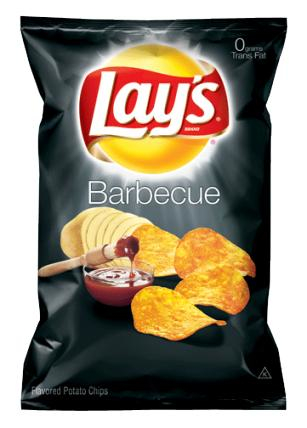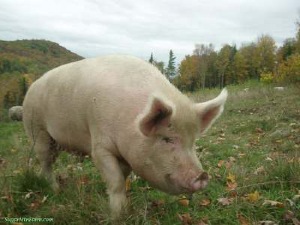local food
-
Lay’s: the locavore’s junk food?
Coming soon to farmers markets nationwide? A couple of years ago, a student group formed at the University of North Carolina at Chapel Hill to reform the campus’ dining halls. Calling the group FLO Food (FLO=fair, local, organic), the students wanted flavorsome, freshly cooked food — and preferably not from abused animals or exploited workers. […]
-
Say “I do” to a green wedding on a budget
Photo: SimonShaw via Flickr. In two months, I will walk across a lawn in taffeta and heels to stand beside my baby sister as she says “I do.” Which means I have spent the last several months planning parties, calming crises, and trying not to gawk at the huge price tag looming over this blessed […]
-
Locavores are ruining food and free range pork will kill us
Get thee to a CAFO!Photo: pubwvjIn a recent op-ed, in The New York Times gravely informed its readers that free-range pork is deadly stuff. Despite evidence that incidence of trichinosis is very rare in the US–about 40 cases a year, and mostly caused by eating wild game (usually bear)-James E. McWilliams says that pork laced […]
-
Myth: Using less energy = sacrifice
Mention “reducing demand” to Average Jane American and she’ll assume you mean conservation: turning off lights, drying clothes on a clothesline, riding a bike to work, wearing a sweater when it’s cold inside. And when she thinks conservation, she’ll generally think, ugh, there go the dirty hippies telling me to feel guilty and be miserable […]
-
Farmers markets need rules if we want them to help the food system
Daniel Duane in Mother Jones warns you about farmers markets becoming “farmers markets”: In 1994, there were 1,755 farmers markets in the United States; by 2008, there were 4,685. In the big scheme of things, this is terrific news; it means Americans are learning to feed themselves properly. But not all parts of the country […]
-
Why isn’t ‘organic pesticide’ an oxymoron?
In Checkout Line, Lou Bendrick cooks up answers to reader questions about how to green their food choices and other diet-related quandaries. Lettuce know what food worries keep you up at night. Ms. Bendrick, I have a question about pesticides and organic food. I buy organic both to encourage the right kind of farming and […]
-
14 Green Couples
It seems everyone’s going green these days — but some couples are doubly committed to the cause. In honor of Valentine’s Day, we take a look at 14 prominent pairs who share a certain planetary passion. Brad and Angie Yes, the ever-expanding footprint of this family might raise a few eco-eyebrows, but they make up […]
-
A hint of the future appears at a Miami-area produce market
 No, this isn't another cap-and-trade post. I'm talking about the yummy kind of markets.
No, this isn't another cap-and-trade post. I'm talking about the yummy kind of markets.As we grapple with ways to reform food production in this country, one problem that crops up is the loss over time of the old farm-to-market networks that fed cities before air freight and transcontinental trucking took over. So even if we wanted to (or, more ominously, were forced to) re-regionalize our food distribution system, the infrastructure no longer exists.
This desire, by the way, is not motivated simply by a need to reduce food miles -- a misleading measure for sure. I and others have talked at length about the misplaced focus on food miles as a way to guide food distribution. Rail, for example, is an especially good way to move food long distances -- especially compared to the option of driving huge fleets of diesel trucks even relatively short distances (which is why rail freight stimulus is such a great idea. Right, Ryan?).
But as we explore ways to reform industrial agriculture and its reliance on fossil fuels in food production, more, smaller farms inevitably come up as an alternative -- and for that sort of system to work, they would need to be proximate to population centers. Speaking of the food miles argument, it's likely that, using our existing infrastructure, exclusively procuring produce from farms within, say, 75 miles of urban centers would cause the transportation component of agricultural carbon emissions to go way up. So, there's a lot to do before anything like this could happen.
And thus we come to the point -- a means to counteract my recent gloom-and-doom posts. Ready?
-
White House chefs and the limits of personal choice
About a month ago, high-profile foodies got pretty amped up about whom Obama would choose as White House chef. Three of them -- Berkeley sustainable food doyenne Alice Waters, Gourmet editor Ruth Reichl, and New York City restaurateur Denny Mayer -- even got together to pen a letter urging the incoming president to replace the current White House chef with someone who chooses locally grown, organic food -- preferably sourced from an on-site vegetable garden. According to a New York Times account, the letter states:
A person of integrity who is devoted to the ideals of sustainability and health would send a powerful message that food choices matter. Supporting seasonal, ripe delicious American food would not only nourish your family, it would support our farmers, inspire your guests, and energize the nation.
Last week, Obama defied this gentle effort to convince him to send the incumbent chef packing. Cristeta Comerford, who has been in charge of cooking first-family meals for the Bushes since 2005, will retain her post, the Obama team announced.
My first reaction to this news was disappointment. After choosing an agribiz-friendly pol as USDA chief, couldn't Obama at least make a symbolic nod in the direction of the sustainable-food movement by picking a new chef?
Now I'm not sure what the fuss was about in the first place.



